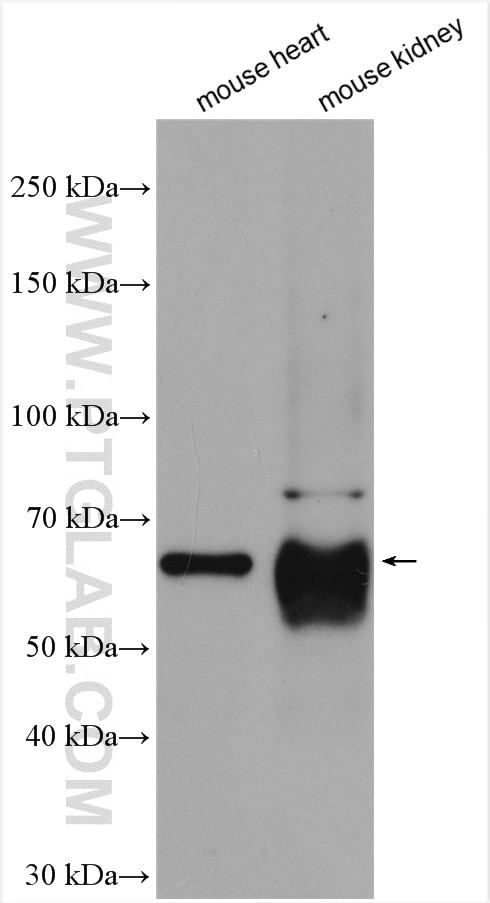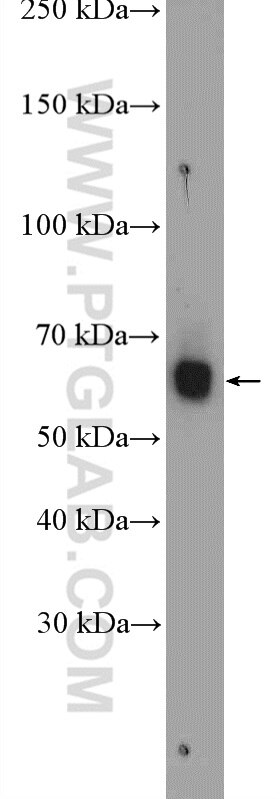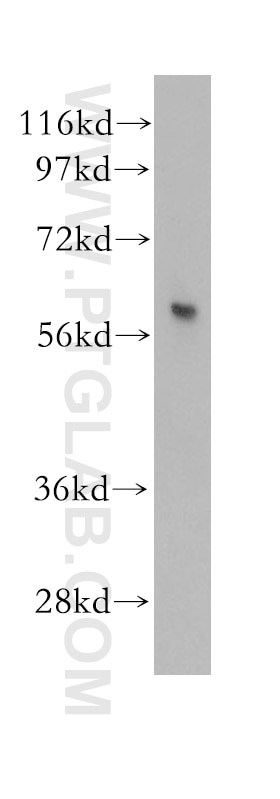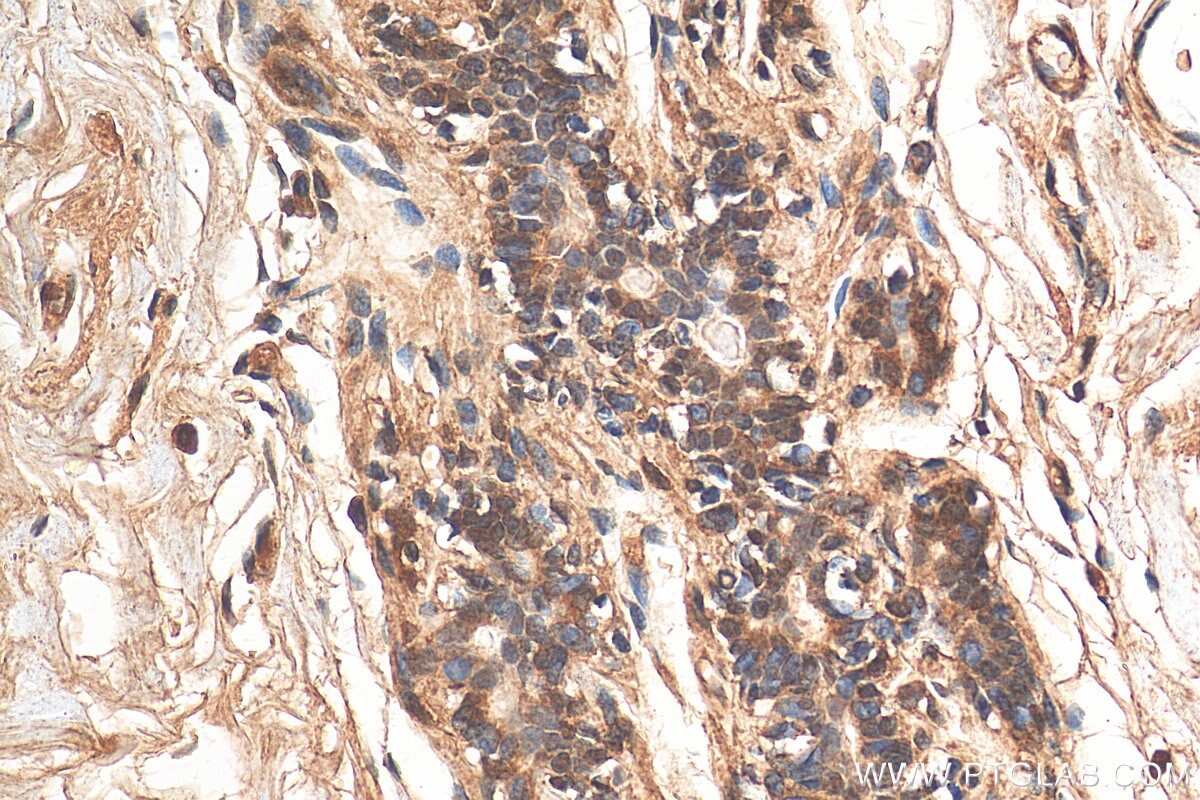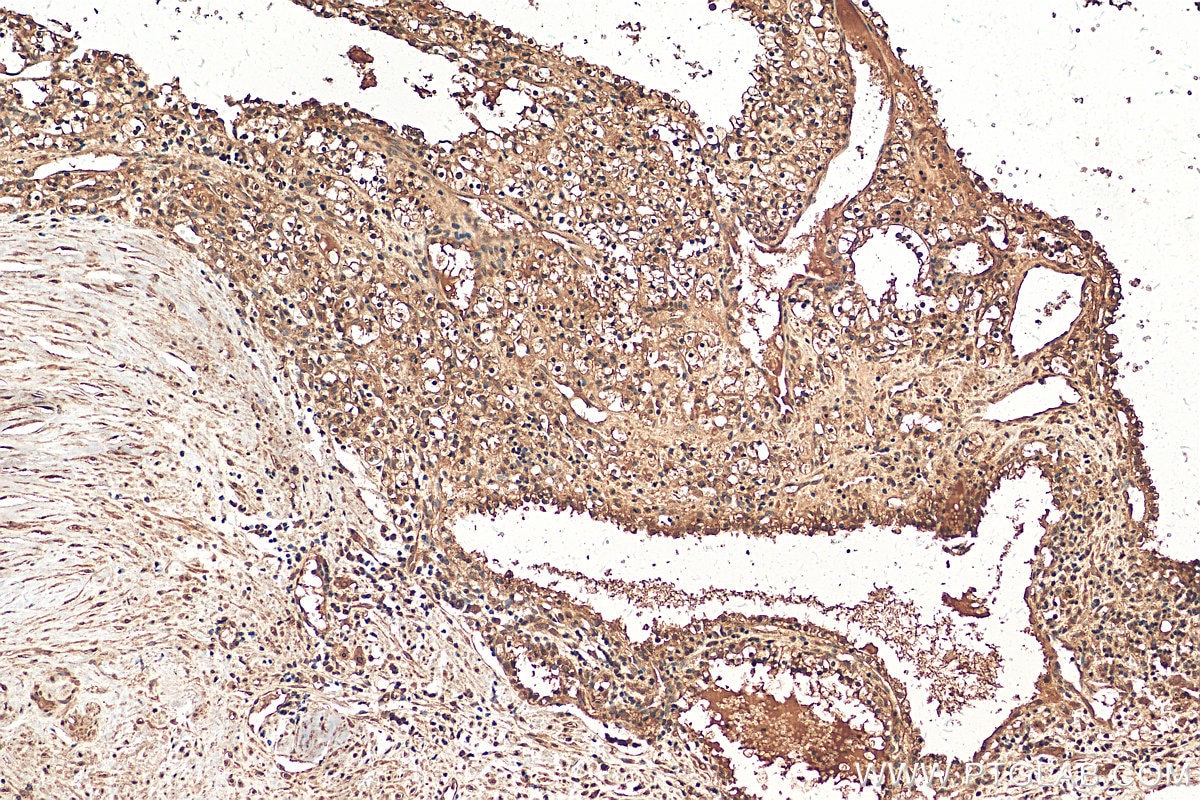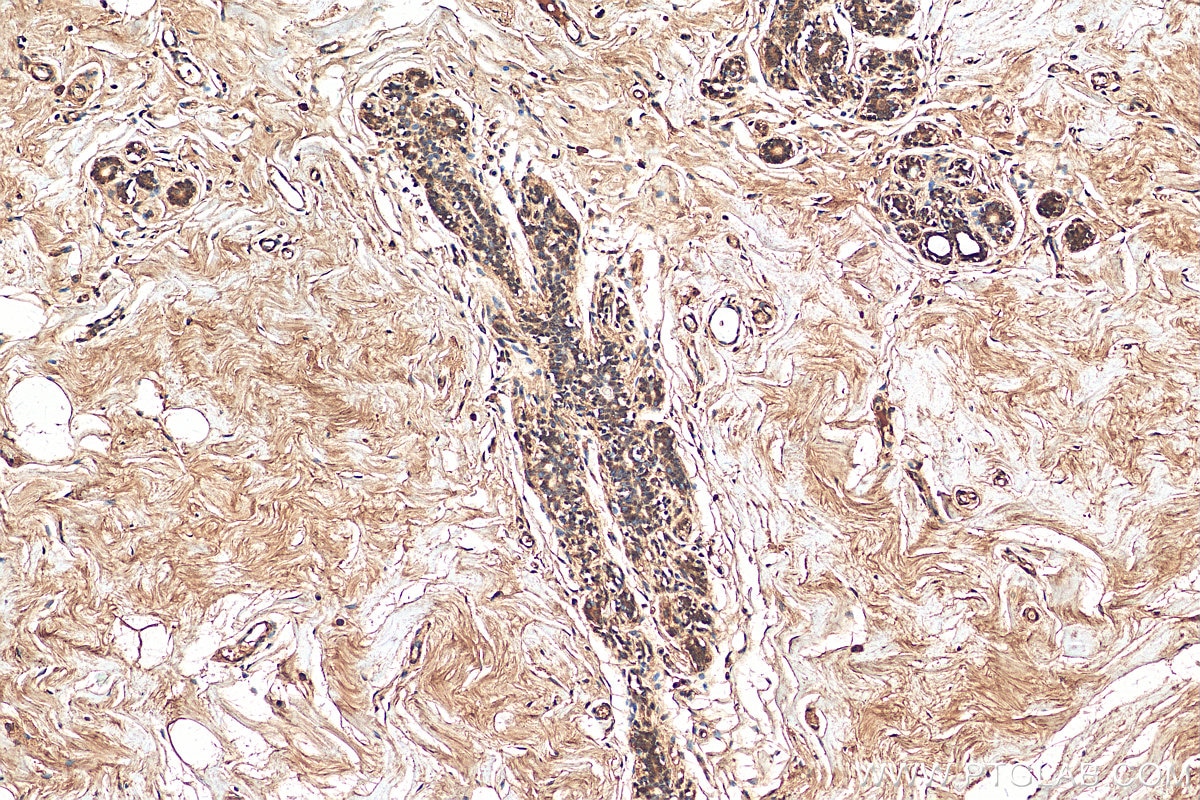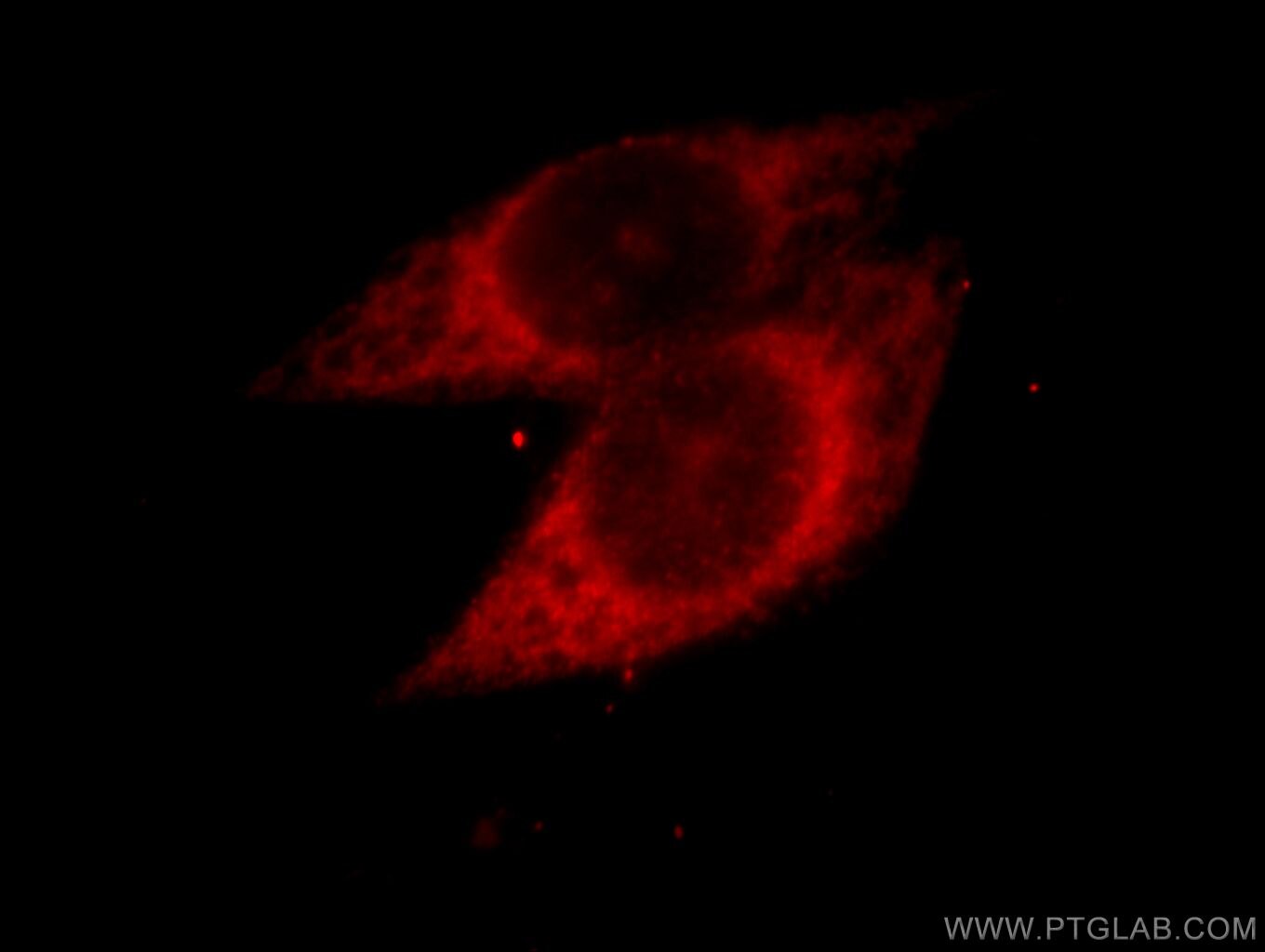- Featured Product
- KD/KO Validated
PARP3 Polyklonaler Antikörper
PARP3 Polyklonal Antikörper für WB, IHC, IF/ICC, ELISA
Wirt / Isotyp
Kaninchen / IgG
Getestete Reaktivität
human, Maus, Ratte
Anwendung
WB, IHC, IF/ICC, ELISA
Konjugation
Unkonjugiert
Kat-Nr. : 11289-1-AP
Synonyme
Geprüfte Anwendungen
| Erfolgreiche Detektion in WB | Mausherzgewebe, humanes Herzgewebe, humanes Nierengewebe, Mausnierengewebe, Rattenherzgewebe |
| Erfolgreiche Detektion in IHC | humanes Mammakarzinomgewebe, humanes Pankreaskarzinomgewebe, humanes Nierenzellkarzinomgewebe Hinweis: Antigendemaskierung mit TE-Puffer pH 9,0 empfohlen. (*) Wahlweise kann die Antigendemaskierung auch mit Citratpuffer pH 6,0 erfolgen. |
| Erfolgreiche Detektion in IF/ICC | HeLa-Zellen |
Empfohlene Verdünnung
| Anwendung | Verdünnung |
|---|---|
| Western Blot (WB) | WB : 1:500-1:3000 |
| Immunhistochemie (IHC) | IHC : 1:50-1:500 |
| Immunfluoreszenz (IF)/ICC | IF/ICC : 1:10-1:100 |
| It is recommended that this reagent should be titrated in each testing system to obtain optimal results. | |
| Sample-dependent, check data in validation data gallery | |
Veröffentlichte Anwendungen
| KD/KO | See 1 publications below |
| WB | See 3 publications below |
Produktinformation
11289-1-AP bindet in WB, IHC, IF/ICC, ELISA PARP3 und zeigt Reaktivität mit human, Maus, Ratten
| Getestete Reaktivität | human, Maus, Ratte |
| In Publikationen genannte Reaktivität | human |
| Wirt / Isotyp | Kaninchen / IgG |
| Klonalität | Polyklonal |
| Typ | Antikörper |
| Immunogen | PARP3 fusion protein Ag1844 |
| Vollständiger Name | poly (ADP-ribose) polymerase family, member 3 |
| Berechnetes Molekulargewicht | 60 kDa |
| Beobachtetes Molekulargewicht | 60-62 kDa |
| GenBank-Zugangsnummer | BC014260 |
| Gene symbol | PARP3 |
| Gene ID (NCBI) | 10039 |
| Konjugation | Unkonjugiert |
| Form | Liquid |
| Reinigungsmethode | Antigen-Affinitätsreinigung |
| Lagerungspuffer | PBS with 0.02% sodium azide and 50% glycerol |
| Lagerungsbedingungen | Bei -20°C lagern. Nach dem Versand ein Jahr lang stabil Aliquotieren ist bei -20oC Lagerung nicht notwendig. 20ul Größen enthalten 0,1% BSA. |
Hintergrundinformationen
PARP3 (Poly(ADP-ribose) polymerase 3), also known as ARTD3, is the third member of the PARP family that catalyze a post-translational modification of proteins to promote, control or adjust numerous cellular events including genome integrity, transcription, differentiation, cell metabolism or cell death (PMID: 31095444). PARP3 is a 60-kDa protein containing an N-terminal WGR (tryptophan-, glycine-, and arginine-rich) domain and a C-terminal catalytic domain. PARP3 has been described to interact with partners belonging to the NHEJ pathway including DNA-PKcs, DNA ligase IV, Ku70 and Ku80 and to accelerate XRCC4/DNA ligase IV-mediated ligation of chromosomal DSB in concert with APLF (PMID: 24598253).
Protokolle
| PRODUKTSPEZIFISCHE PROTOKOLLE | |
|---|---|
| WB protocol for PARP3 antibody 11289-1-AP | Protokoll herunterladen |
| IHC protocol for PARP3 antibody 11289-1-AP | Protokoll herunterladenl |
| IF protocol for PARP3 antibody 11289-1-AP | Protokoll herunterladen |
| STANDARD-PROTOKOLLE | |
|---|---|
| Klicken Sie hier, um unsere Standardprotokolle anzuzeigen |
Publikationen
| Species | Application | Title |
|---|---|---|
Mol Cell Unrestrained poly-ADP-ribosylation provides insights into chromatin regulation and human disease. | ||
EBioMedicine PARP inhibitors suppress tumours via centrosome error-induced senescence independent of DNA damage response | ||
Cell Chem Biol Allosteric regulation of DNA binding and target residence time drive the cytotoxicity of phthalazinone-based PARP-1 inhibitors
|
